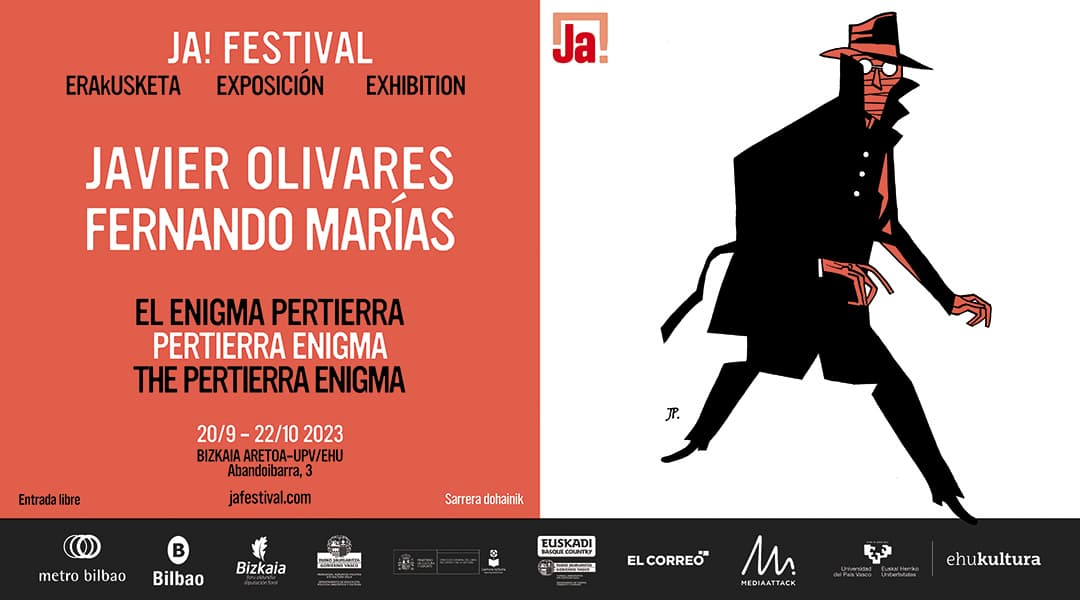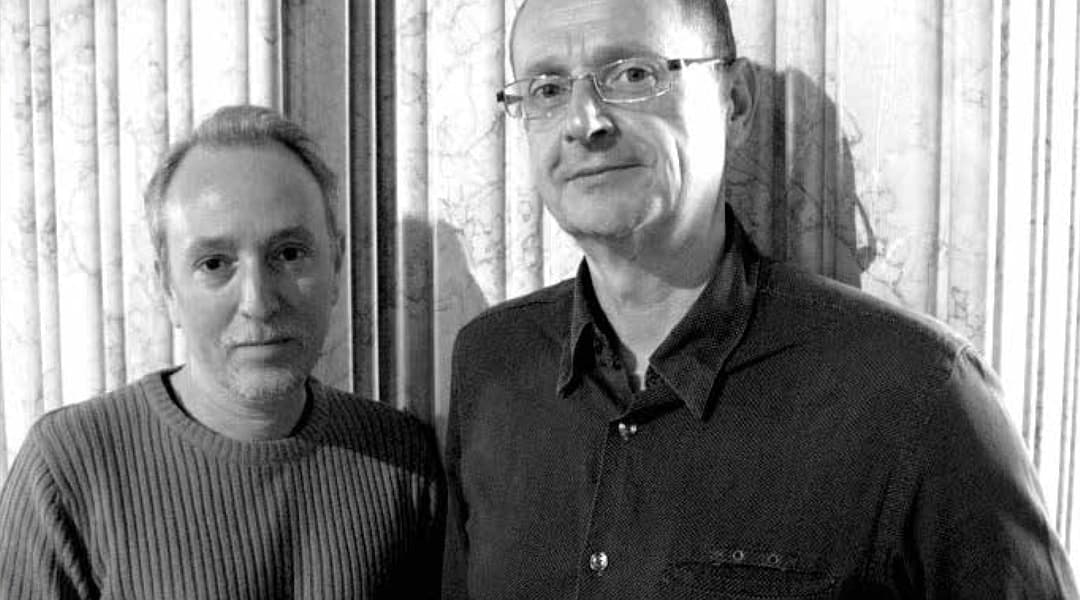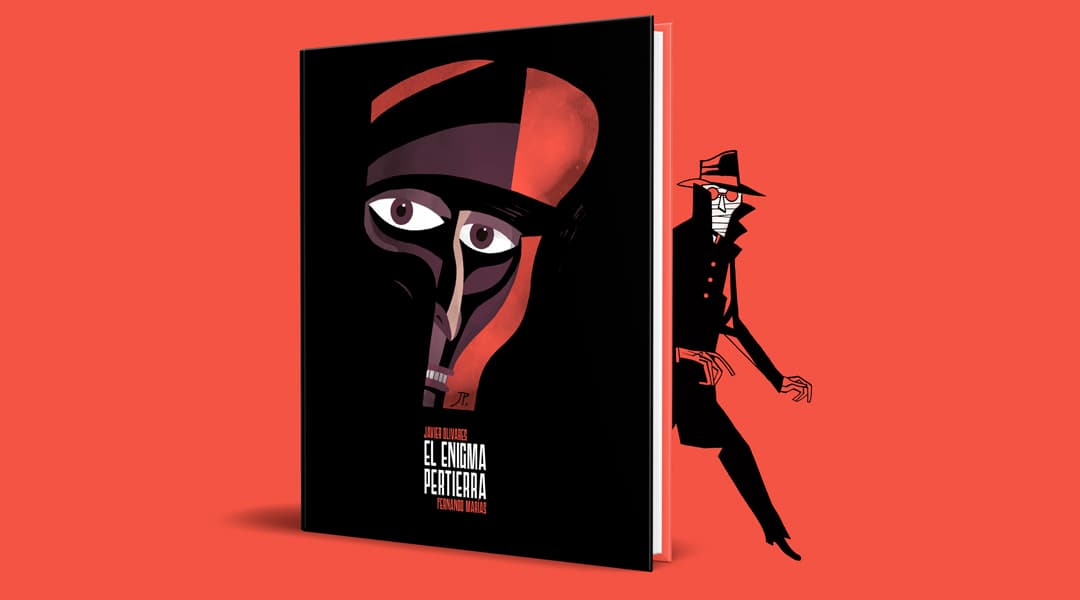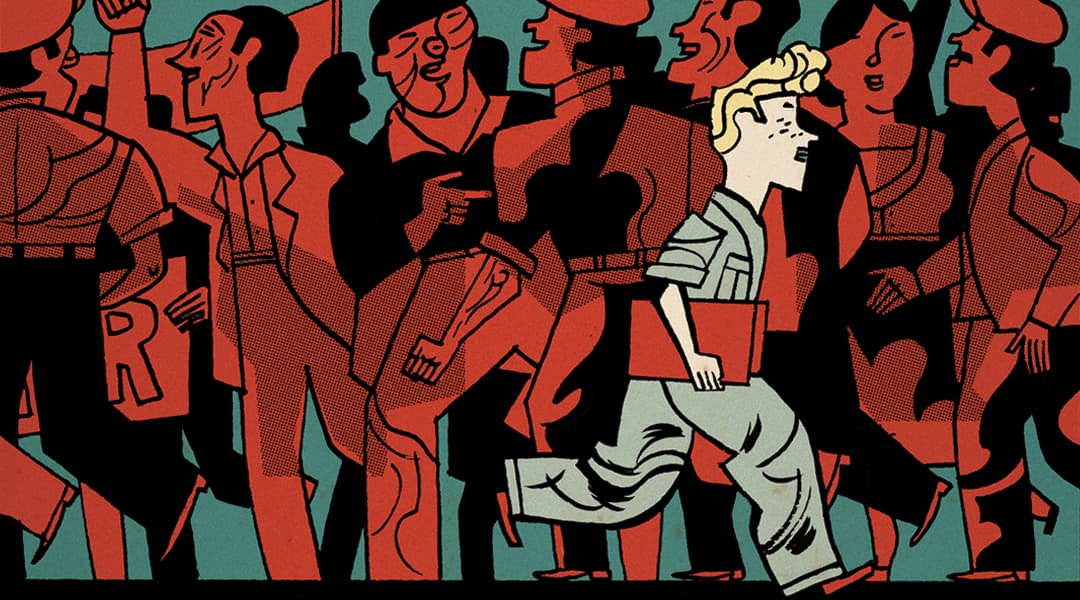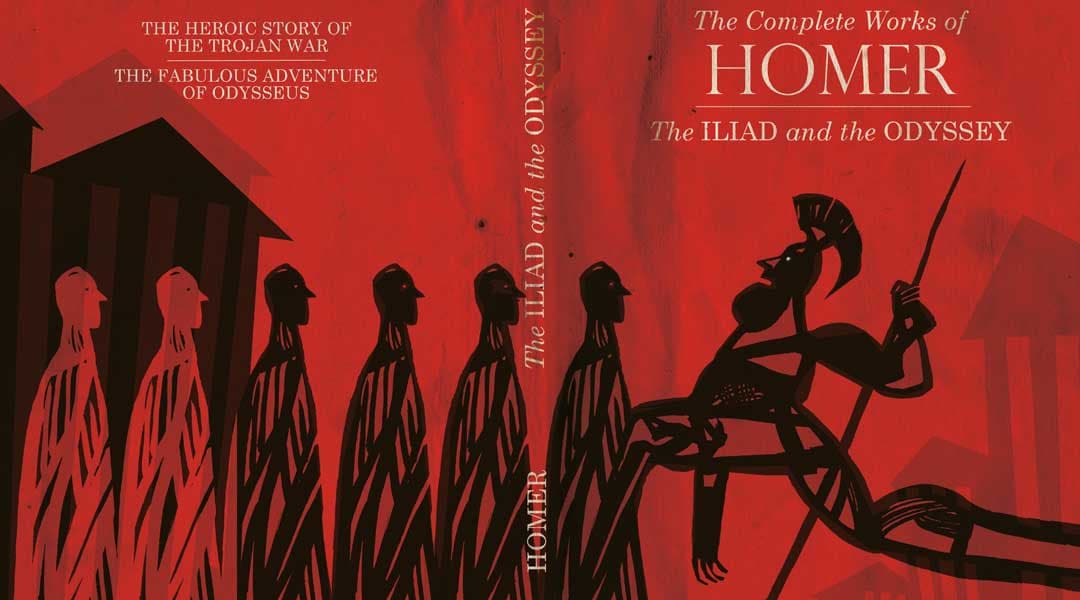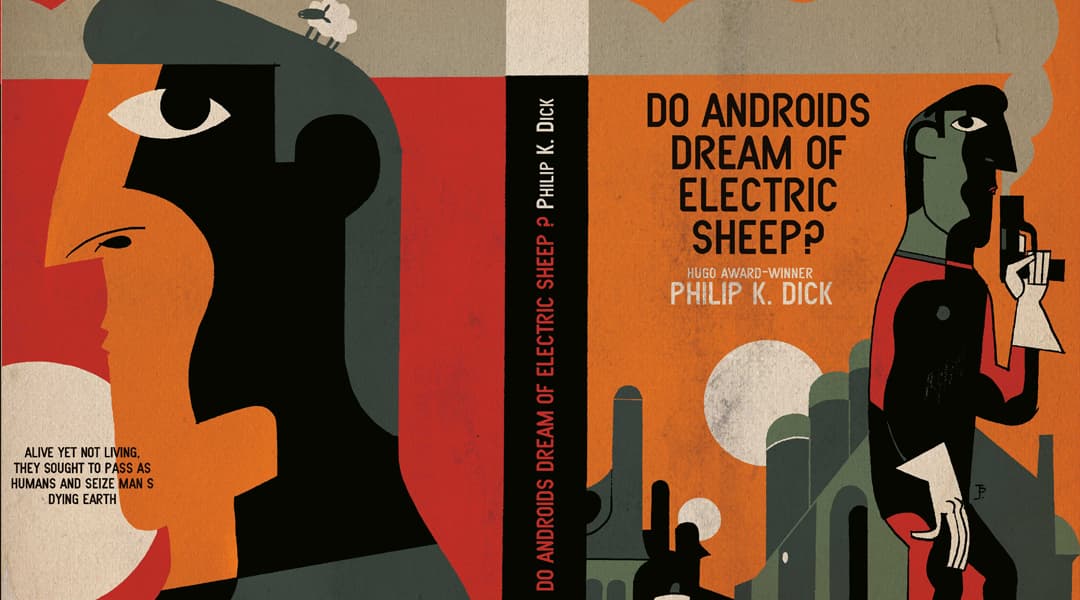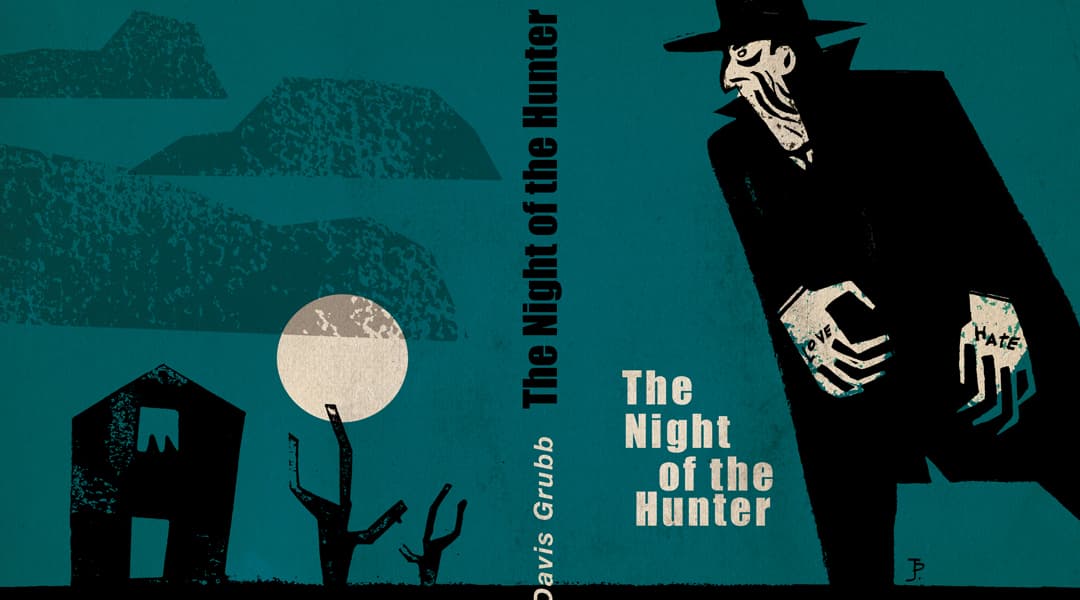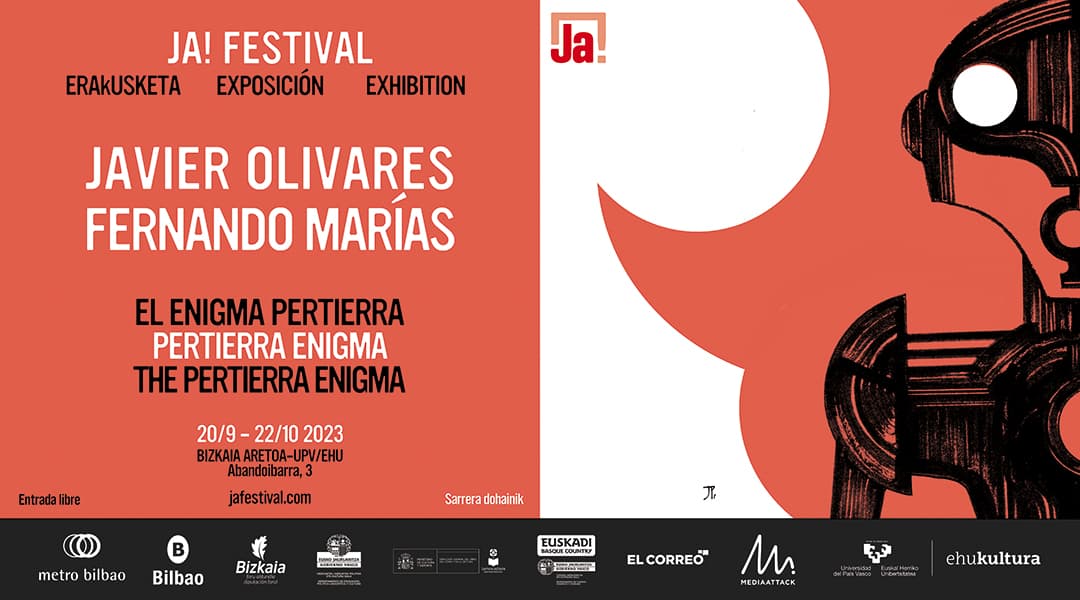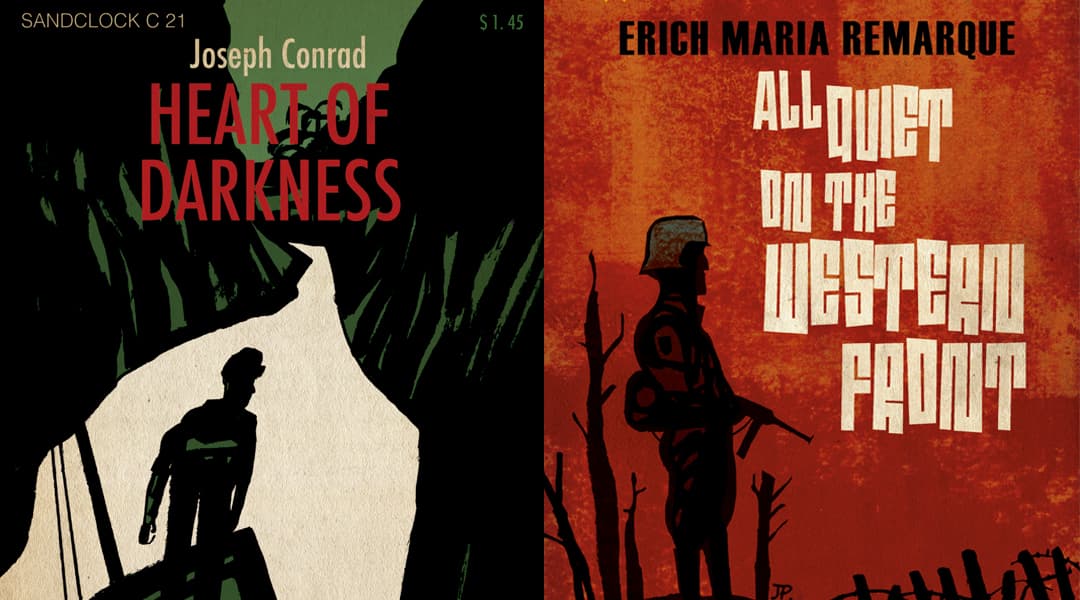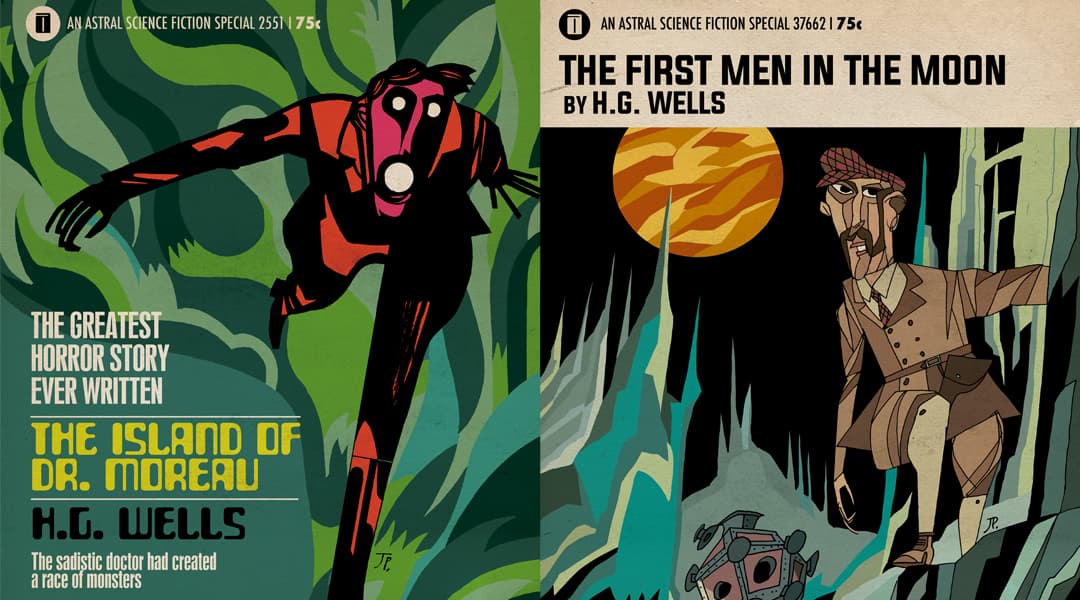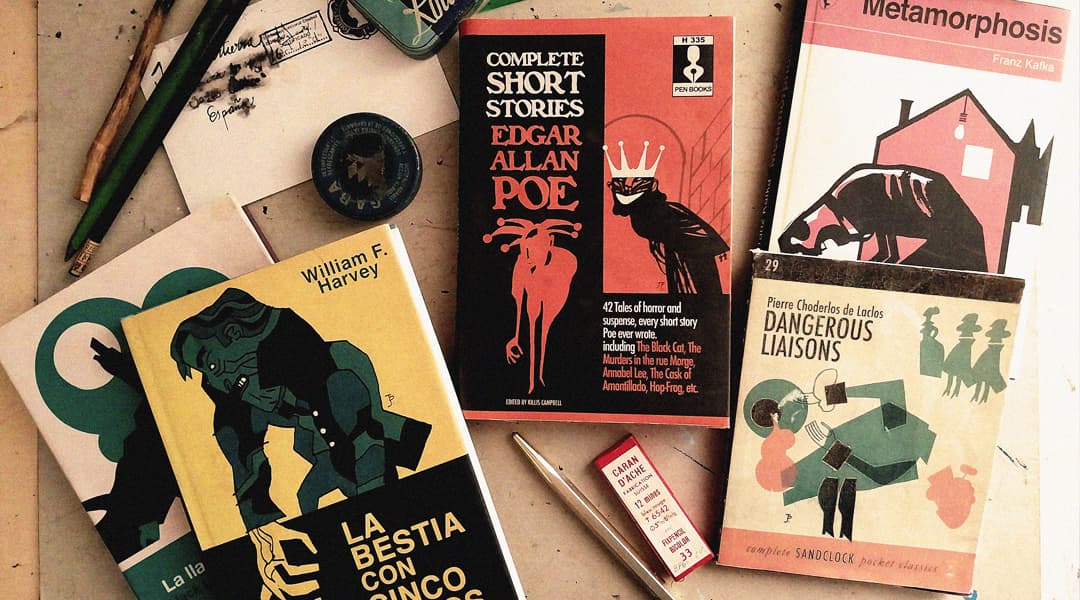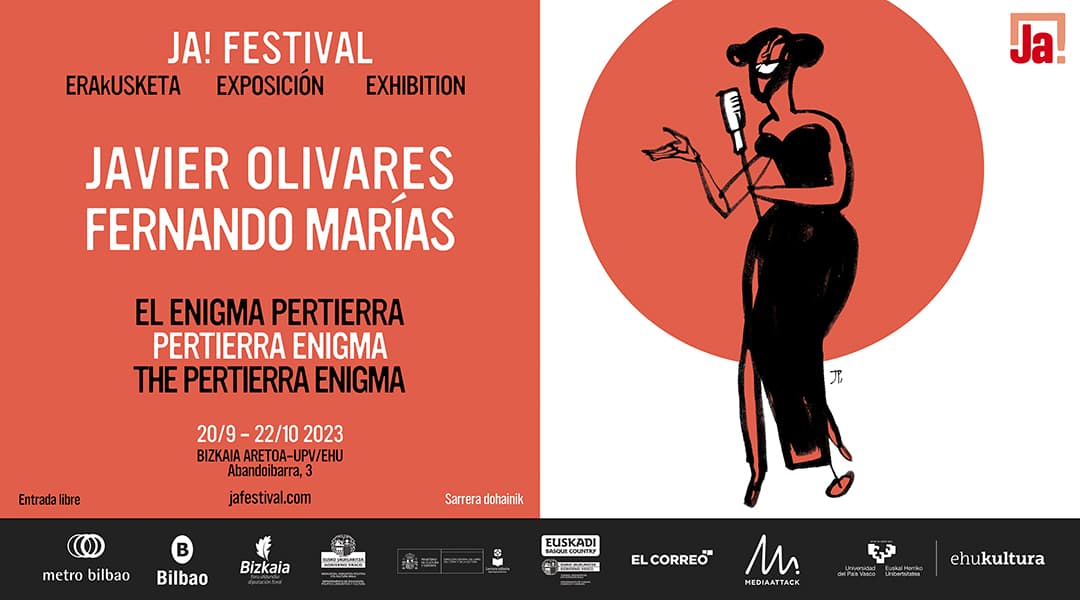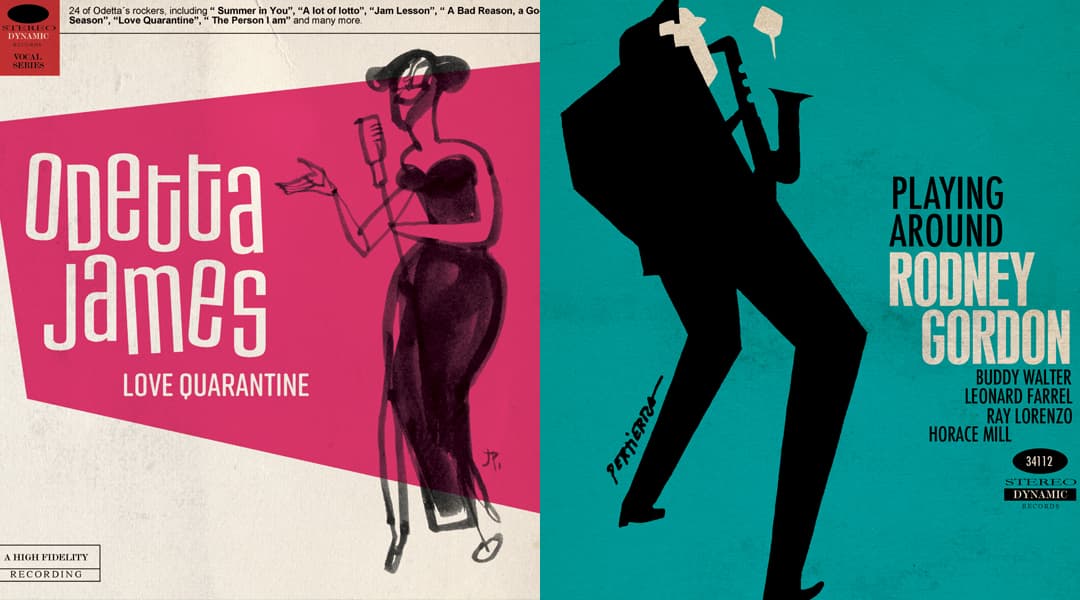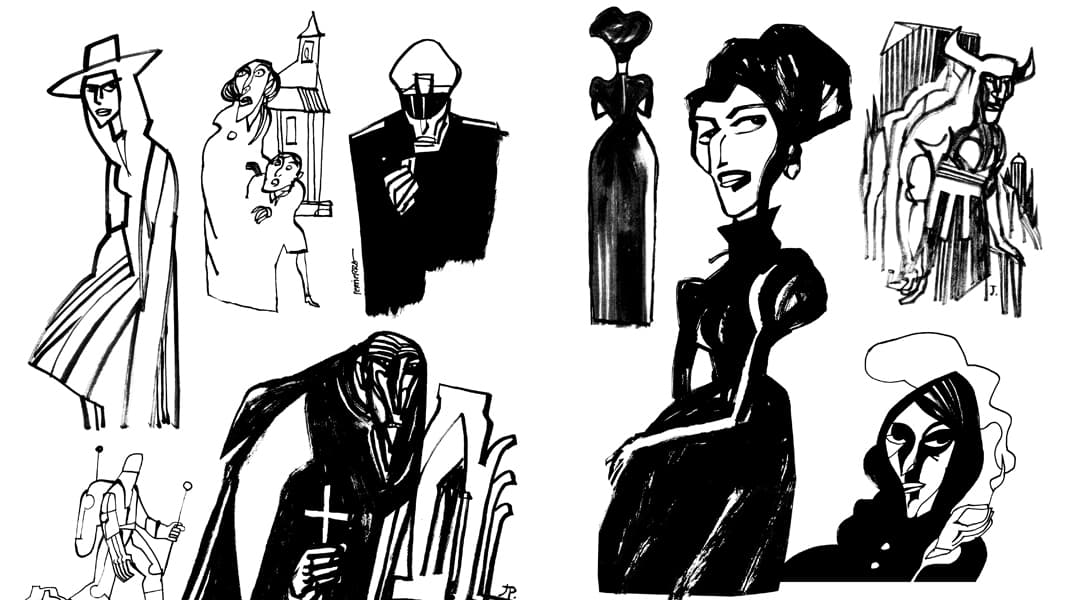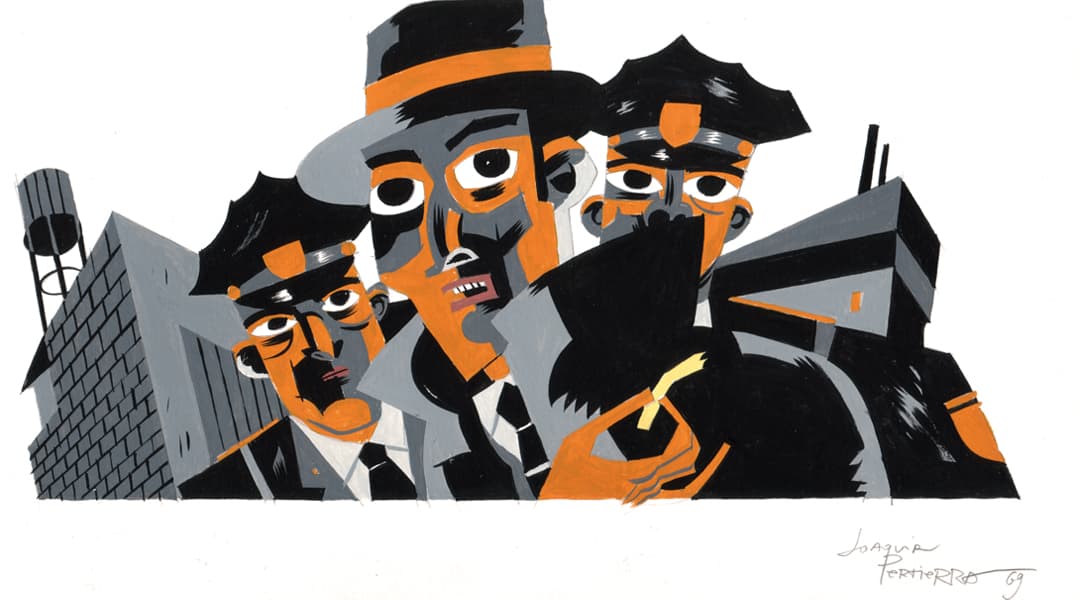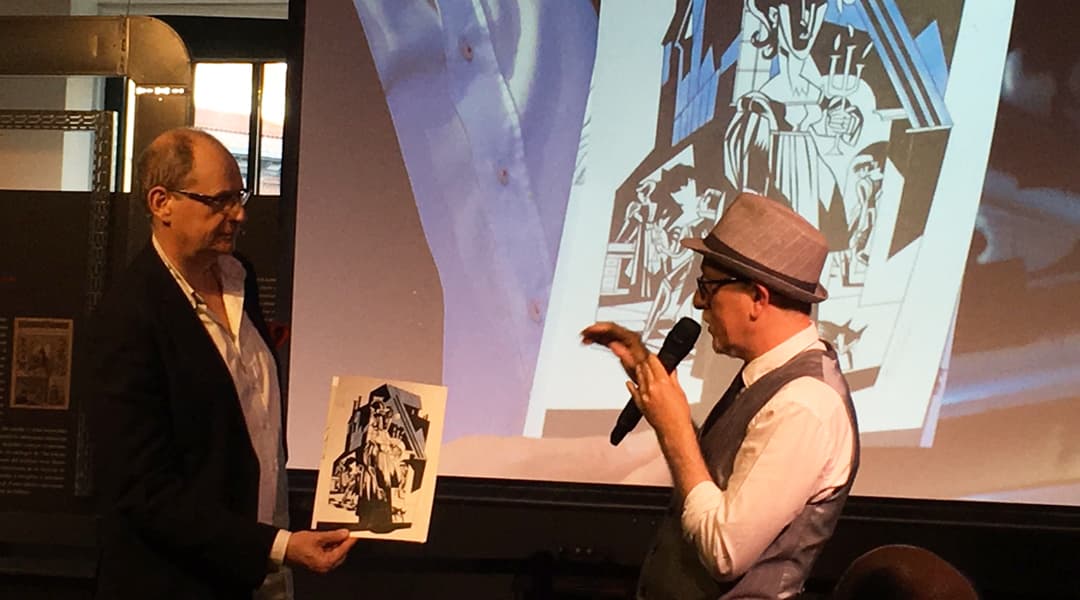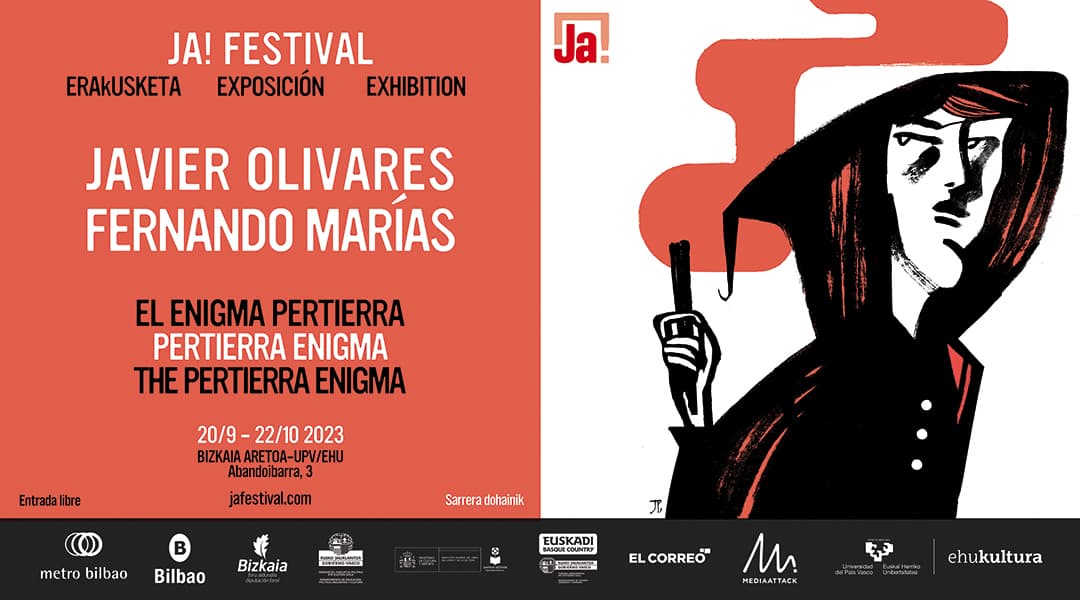Exhibition
Who was Joaquín Pertierra? Answering this question involves delving into an enigma where the line between imagination and reality is blurred, much like magic tricks. ‘Pertierra Enigma’ exhibition celebrates the creative process and showcases the work of the mysterious Pertierra. It also pays tribute to mid-20th century Spanish illustrators and the late Fernando Marías, who was instrumental in this exhibition.
Pertierra Enigma’
Sala Axular y anexos de Bizkaia Aretoa UPV/EHU
From September 20 to October 22*.
FREE ENTRANCE
Monday to Friday: 8.00 – 20.00
Saturday and holidays: 10.00 – 14.00 / 16.00 – 20.00
Sunday: 10.00 – 14.00
*The exhibition will be closed to the public on the 9th and 10th of October.
The exhibition ‘Pertierra Enigma’ is the result of a project created by the illustrator Javier Olivares and the writer Fernando Marías, a long-missed friend of our festival who passed away in February 2022. After pouring fourteen years of hard work and dedication into their project, the authors’ dream of creating an exhibition has finally come to fruition. The result of their labour has been immortalized in a carefully crafted book meticulously published by Astiberri. Upon commemorating the one-year anniversary of Fernando’s demise, we stumbled upon some enlightening details about Pertierra that were previously unknown to us. With the discovery of his passion for a literary joke, we were motivated to push forward and bring the exhibition to life, so we accepted the game: the exhibition would become a reality.
Produced and designed by the festival with the complicity of Olivares for the 14th edition of the festival, it will be available for touring afterwards.
Who was Joaquín Pertierra? Magic and enigma come together in a journey that, as in life, the imaginary and reality walk hand in hand. The exhibition explores a creative process that heavily relies on the power of the imagination. It does so by tracing the mystery of Joaquín Pertierra, the enigmatic illustrator that Javier Olivares embodies through a dedicated creative endeavour that has multiplied, or at least endowed with a dual nature, his artistic personality. This is a story about a strong bond between a couple of creators, turned into a threesome with an “evanescent real being”. It’s also a tribute to the talented Spanish artists of the mid-twentieth century and a nod to the writer Fernando Marías, who was known for his passion and inquisitiveness.
‘‘Pertierra Enigma’ will be exhibited in the Axular hall and annexes of the Bizkaia Aretoa UPV/EHU from 20 September to 22 October. Free admission.
The Pertierra Affair – Fernando Marías
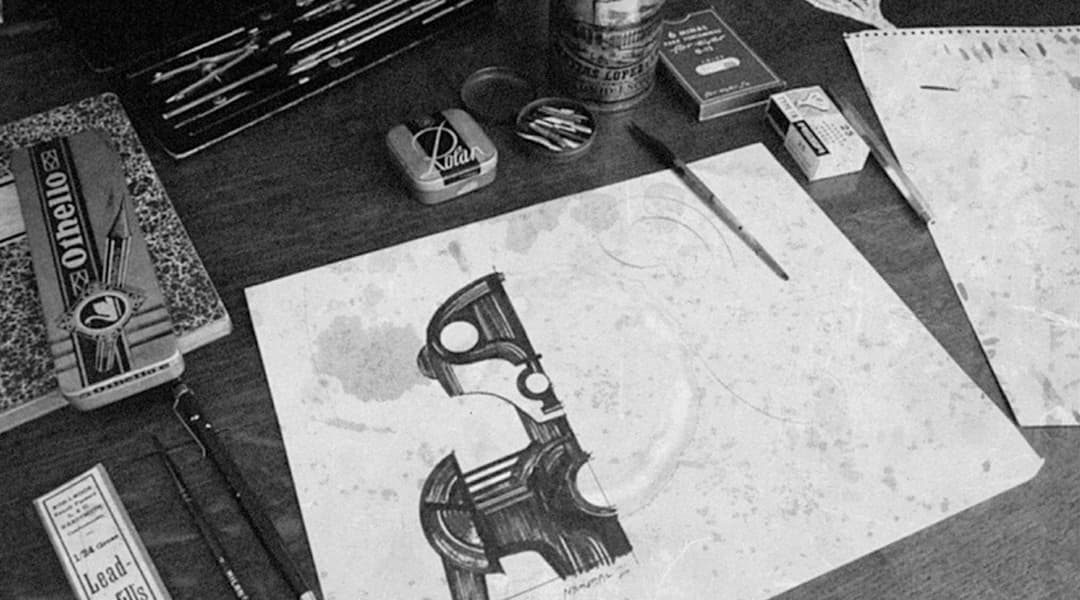
BACKGROUND INFORMATION
In November 2009, Fernando Marías was commissioned by the SM publishing house to create a groundbreaking ‘transmedia’ novel in Spanish for young readers. The term ‘transmedia’ was used to designate a genre emerging at the time, which, in addition to print, included options such as websites, YouTube links, etc.
Fernando proposed El silencio se mueve, a novel that would tell the story of Joaquín Pertierra, a Spanish illustrator born in 1919 and deceased in 1981, who, during the years of the Spanish Civil War, was involved in a murder that would haunt him for the rest of his life.
An essential part of El silencio se mueve is a comic that Pertierra would have drawn at the end of the 1970s with hidden clues to solve the crime that haunted him: a sort of covert confession. Fernando and SM called on Javier Olivares, illustrator, scriptwriter and comic author, to create this comic. They wanted to play with the idea that Pertierra really existed and created this comic. To do so, they gave Javier an unusual condition that he, even more unusually, accepted: he had to renounce signing the book so that this game of identities would be even more effective. Javier was amused not only by “inventing” a new way of drawing but also by the idea of feeding, outside the book, a blog with supposed drawings that Pertierra had made over the years.
El silencio se mueve was published in October 2010. The ambitious novel project did not work out as the publisher and the authors had hoped.
It was then that the extraordinary story of Joaquín Pertierra began.
THE PERTIERRA AFFAIR
Javier Olivares was abducted by Joaquín Pertierra immediately after the book’s release. Javier found himself captivated by Pertierra’s unique approach to illustrating, which offered a refreshing wellspring of creativity that resonated with his own. He saw it as a welcome abduction of his imagination. Javier stopped being Olivares to become Olivares and Pertierra.
He was fascinated by the opportunity to contribute to Pertierra’s blog and began creating pieces that resembled Pertierra’s own work. These pieces ranged from book covers, jazz album covers and movie posters, to a short autobiographical comic detailing Pertierra’s time in Paris with filmmaker Jean-Pierre Melville in 1969.
While some experts acknowledge similarities and possible influences between the two creators, it is clear that Pertierra’s work, distinct from the creations of Javier, experienced significant exponential growth. In due course, he gained recognition as one of the foremost writers of his era. Javier, who acted as Pertierra’s agent, successfully spread Pertierra’s work through a blog. Several unique occurrences happened: Javier Pertierra’s art gained recognition among academic publications and author compilations from the 1970s, which quickly caught the attention of publishers from various backgrounds that approached him to commission cover illustrations, and his exceptional work even earned him dedicated exhibitions. Currently, a documentary about his unique career is in the works, solidifying his place as a remarkable artist in the industry.
Who is Joaquín Pertierra? The novel “El silencio se mueve” and its creation story, as recounted here, have generated some inquiries over time;
Is Joaquín Pertierra a real person or just a myth? Did Olivares spread the false idea that Pertierra never existed? Is this a parallel to the story of Bruce Wayne and Batman? Why does Olivares persist in denying Pertierra’s existence, even though his work is well-known and could be compiled into a great book?
Fernando Marías (2020)
PERTIERRA ENIGMA AT METRO BILBAO
Indautxu Station
from September 17 to October 16
San Mamés Station
from October 16 to 30
Visitors can view ten large-format reproductions of Javier Olivares/ Joaquín Pertierra’s illustrations in the lobbies of select Metro Bilbao stations. The exhibit will be displayed from 17 September to 16 October in Indautxu and from 16 to 30 October in San Mamés.

